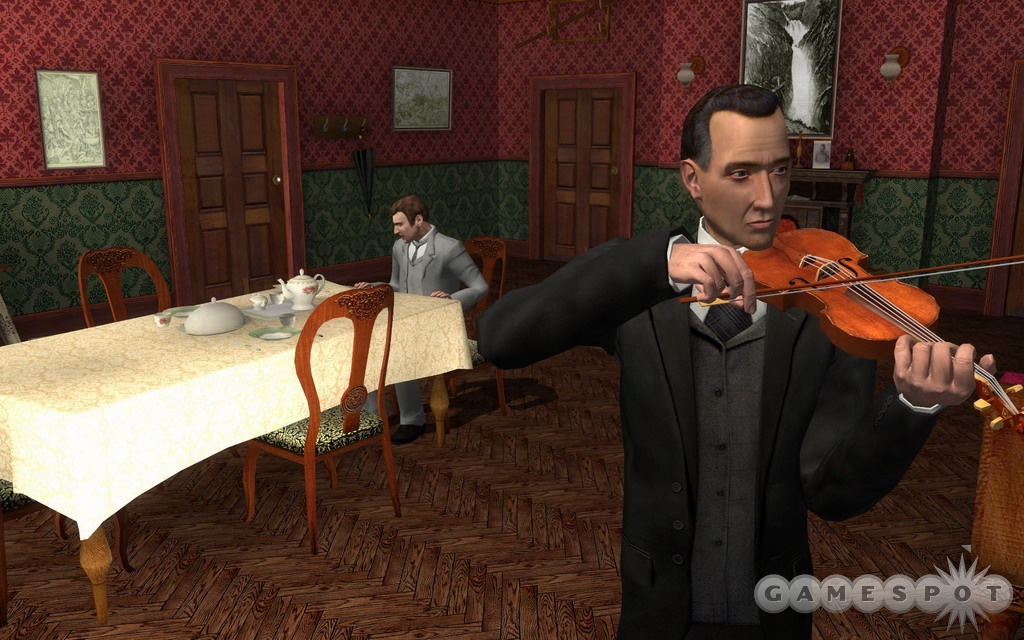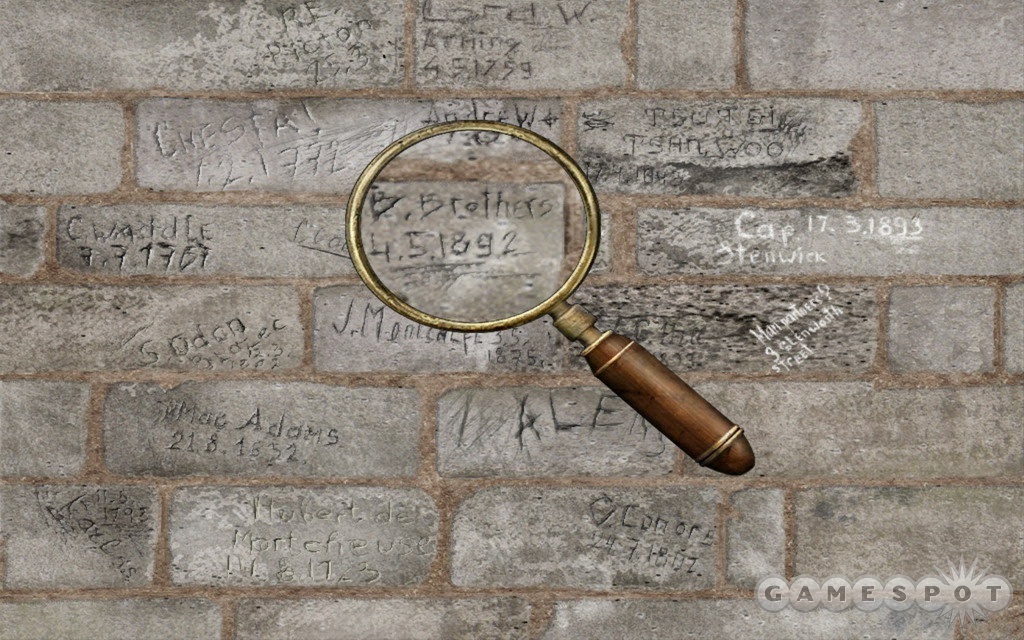Sherlock Holmes: Nemesis almost certainly isn't the game you expect, especially if you're hoping for a battle of wits between Holmes and archenemy Professor Moriarty. Standing in for Moriarty with the master detective is Arsene Lupin, a French thief who starred in a series of popular novels written by Maurice Leblanc in the late 19th century. Lupin remains a hugely popular literary figure in France, but this combo of characters lacks the punch of the Holmes-Moriarty showdown that the title suggests. Where we could have had a titanic battle of wits, we instead get a somewhat going-through-the-motions story where Holmes plays Batman to Lupin's Riddler, as well as puzzles that are too grueling to solve without immense reserves of patience and access to an online walkthrough.

If you have any knowledge of how Lupin and Holmes plied their trades, you can probably guess the basics of the tale told here. Lupin is on the prowl in London, having challenged Holmes and his sidekick, Dr. Watson, to prevent him from stealing priceless artifacts. His goal is to humiliate the arrogant British Empire; yours, of course, is to foil the obnoxious Frenchman by stopping these thefts. Everything plays out as a stereotypical cat-and-mouse game, with Lupin leaving behind cryptic clues after looting such famous spots as Buckingham Palace, the National Gallery, and the British Museum. All in all, this is a fairly well-told yarn, even if it's obvious that the writers didn't burn any midnight oil on the fine points of the plot. Fans of Holmes and Lupin will no doubt be interested to see the two facing off for the first time since a couple of crossover novels penned by Leblanc a century ago (which, incidentally, angered Holmes' creator Sir Arthur Conan Doyle so much that he sued to force Leblanc to rename his detective Herlock Sholmes). But everyone else will find this story a basic take on the traditional "bad guy taunts police" crime drama.
Style and setting stand out more than the plot, anyhow. As with last year's The Awakened, all of the game's locales are brought to life with a 3D engine that allows you to roam the full depth and breadth of your surroundings. It doesn't exactly provide cutting-edge graphics, but the game is still more attractive than the average adventure. Locales are nicely realized, too, with the investigation taking you to all sorts of London landmarks. Many are quite impressively staged, particularly the National Gallery and British Museum, which feature scanned copies of dozens of famous paintings, as well as numerous historical artifacts. You actually get a fairly thorough lesson in art history and history in general during the game. The only major sore points to the presentation are subpar character art and awkward voice acting. Holmes, Watson, Inspector Lestrade, and the many quirky Londoners with whom you deal during the course of the adventure look more like shadowy, poorly sculpted wax figures than real people. The dialogue is also stilted and loaded with many odd pronunciations (it doesn't even get "Arsene" right). At least the musical side of the audio is just about perfect, thanks to a subtle-yet-tension-building classical score reliant on strings and piano.
But these issues are minor in comparison with Nemesis' wildly tough puzzles. While the game mostly steers clear of the old-school "pick up everything that isn't nailed down" formula and sticks to common sense (at least until near the end of the game where it explodes in stupidity with Holmes practically turning into Inspector Gadget), solving puzzles requires a ton of busywork. You constantly wander back and forth examining your surroundings, engaging in a great many pixel hunts with the naked eye, as well as Holmes' famous magnifying glass. Many puzzles aren't fully spelled out, leaving you in the dark about what you're supposed to be doing, especially when it comes to set-piece problems, such as arranging paintings into some kind of unknown pattern, building a wooden star to unlock a chest, and lining up metal rods to form Roman numerals. A list of objectives in the menu would have been much appreciated, as would added tips from Holmes, who often just says things like "Think!" when approaching a puzzle. More help is needed here, given how involved some of the puzzles are and how many steps they require to be solved.

Worse yet, the design is incredibly nitpicky when it comes to the steps that you need to take to move the game forward. Even if you've gathered enough evidence and know how you need to proceed, the game regularly won't let you push unless you've completed all of the tasks required. This is a particular problem in the opening National Gallery episode. You can quickly collect all of the clues you need to start checking out paintings and tracking Lupin's next target, but you aren't allowed to do so until you've completed every last little busywork job, such as measuring all of the footprints spread throughout the gallery. Without recourse to a walkthrough, good luck making it through the game without getting stuck a few dozen times.
Yet even with all of these drawbacks, Sherlock Holmes: Nemesis is often worth the struggle. Virtually all of the puzzles here are worthy of the great detective, partially because of their difficulty and partially because of their reliance on British historical or cultural artifacts. In many ways, the game seems as much a part of gaslit Victorian London as Doyle's Sherlock Holmes stories. If only it were just a little bit more playable.



